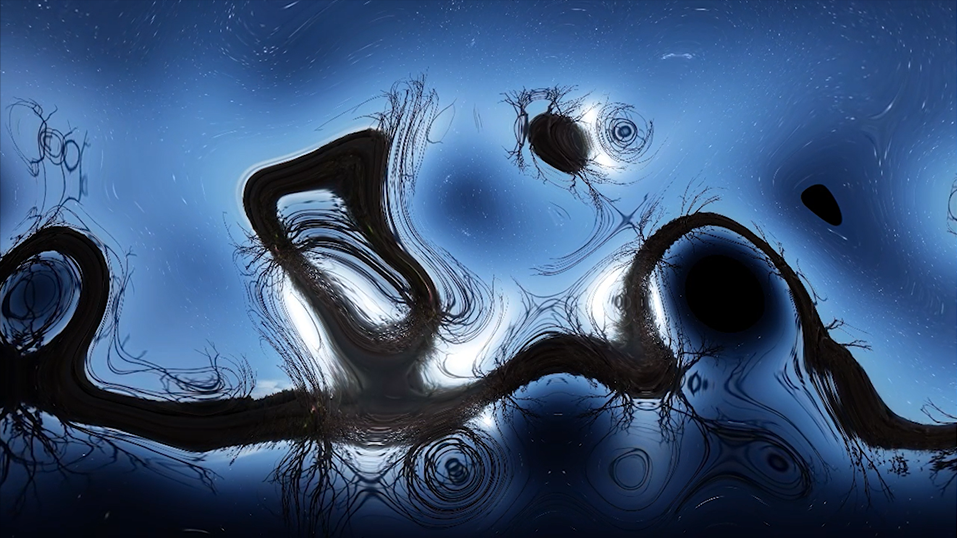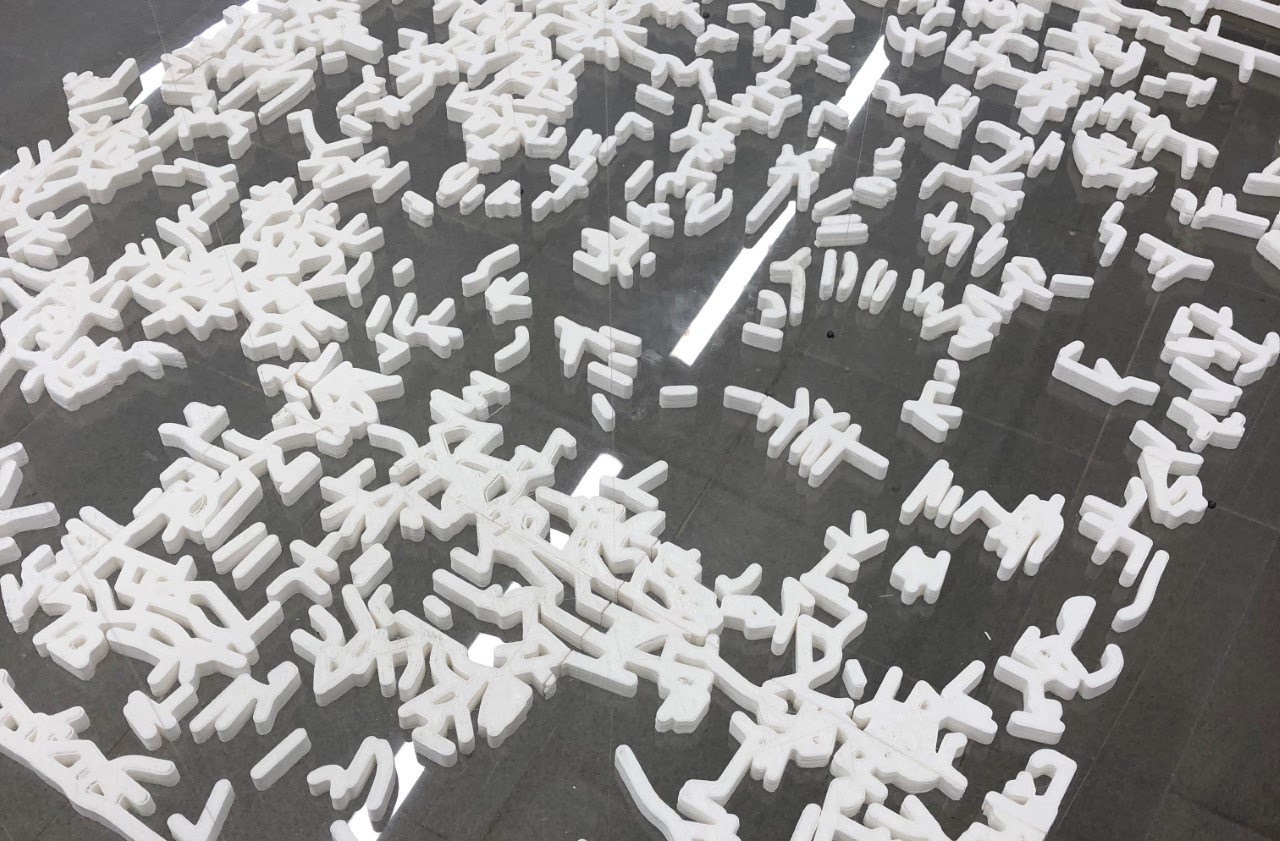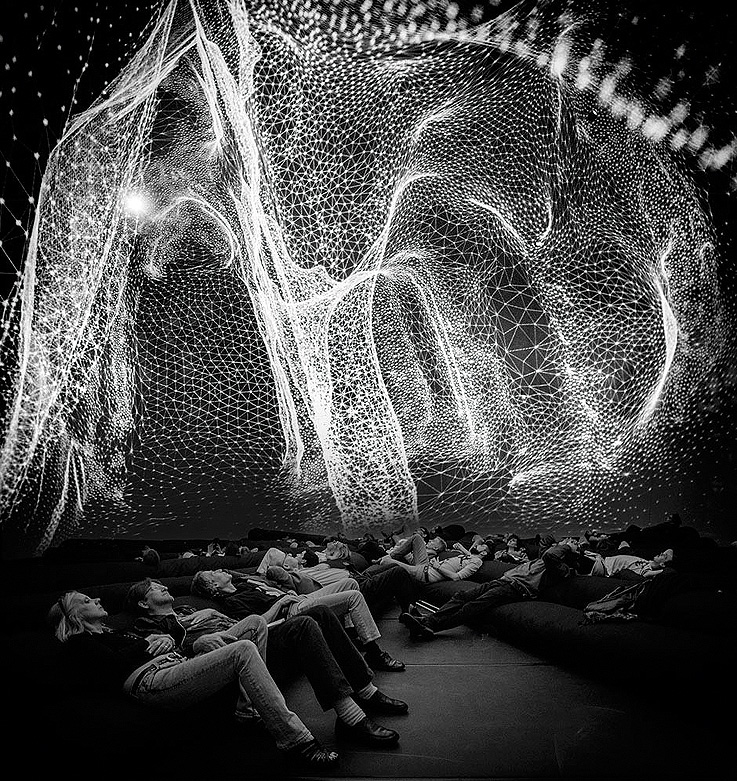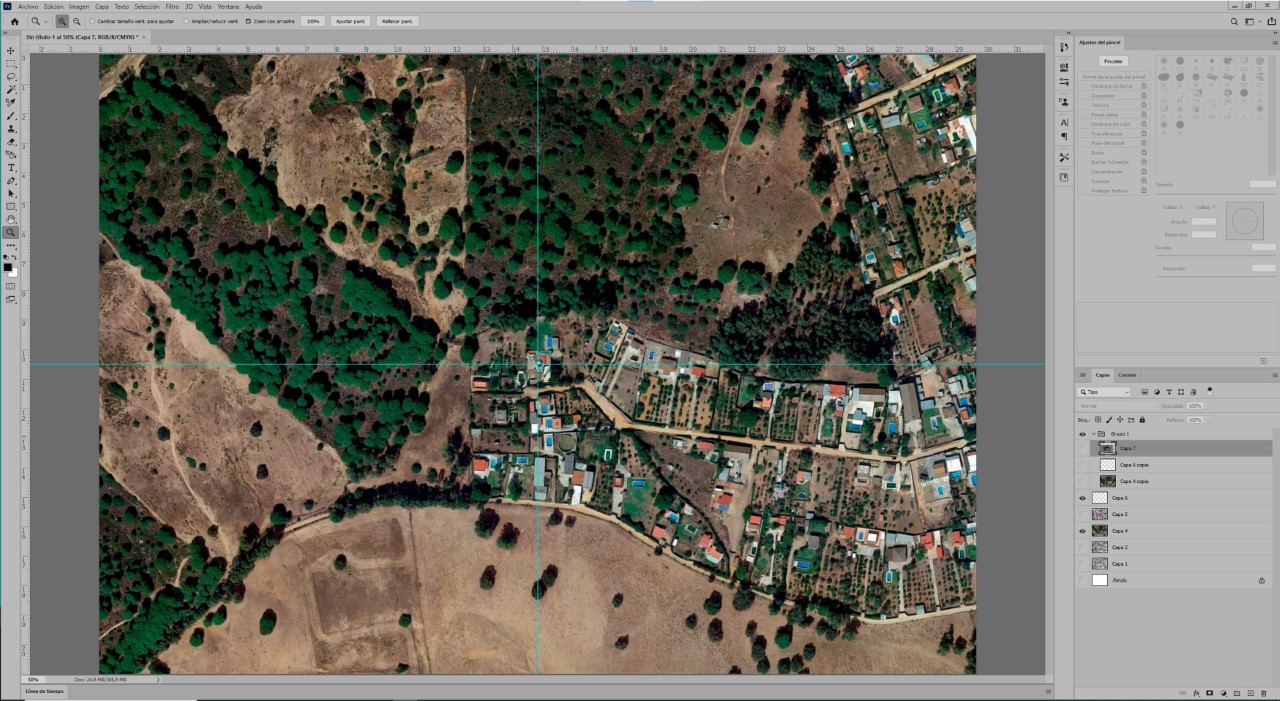
Art-Science-Technology-Society
RESEARCH PAPERS
In this space you can find academic results of impact associated with our project.
University academic work related to the ASTER project

DOCTORAL THESIS “The Age of Digital Productivity: The Internet and the Modes of Creating, Observing and Being Observed”.
Doctoral candidate and researcher: Helena Hernández Acuaviva
Directors:
- Áurea Muñoz del Amo. Professor. Department of Drawing. Faculty of Fine Arts. University of Seville.
- Rocío García Robles. Professor and Researcher in charge of the research group “ASTERISM: Art, Science, Engineering Research: Innovation, Synergies and Methodologies” (Plan Andaluz de Investigación, TIC-247).. Department of Computer Architecture and Technology. School of Computer Science. University of Seville.
Doctoral Program: Art and Heritage. University of Seville. Line of research of the Program: “Experimental research of the diverse artistic languages and their applied technologies. Materials, procedures and techniques”. Research Group: HUM822 Graphics and Digital Creation.
El objetivo principal de la investigación se centra en indagar cómo fluye y se transforma la imagen artística en el espacio de las redes sociales e Internet, atendiendo a dos cuestiones que entendemos estrechamente asociadas a su condición contemporánea, de una parte, el fenómeno de la posverdad y, de otro, la problemática de la saturación del yo.
The main objective of the research focuses on investigating how the artistic image flows and is transformed in the space of social networks and the Internet, addressing two issues that we understand to be closely associated with its contemporary condition, on the one hand, the phenomenon of post-truth and, on the other, the problem of the saturation of the self. It seems appropriate to study what is happening in this parallel society that is the online society and we want to propose different and novel discourses that can be given as a result of the analysis of the creative possibilities offered by social networks and their various platforms and tools. We intend, therefore, to analyze and specify the way in which contemporary creation is articulated in the digital context, identifying the existing relationships between artistic practices linked to the Internet and social networks, the ways of creating in the digital medium, the way in which artists observe what happens on the virtual plane and how the user attends to art in this area. To this end, we will rely on ideas extracted from artistic and thought referents who use the Internet and social networks in their discourses, either as a tool, as a discursive focus or as a catalyzing element in their own creations. However, it seems to us equally necessary that this analysis is nourished by personal experience with the digital environment, so that the position we will adopt in this study will not be that of mere observation of the phenomenon, but that of applied research and experimentation, contributing with our own artistic production and coherent with the research plan. Finally, with this project we want to demonstrate the infinite creative possibilities that exist behind the screen of a computer, a cell phone or a touch screen, especially those related to sharing, interaction and exchange, advocating the network as a horizontal platform through which to bring art and its reflections to society.

DOCTORAL THESIS “Empty Cubes: Interactive installations through electronic devices in contemporary art”.
Doctoral candidate and researcher: Olga Albillos Castillo
Directors:
- Rocío García Robles. Professor and Researcher in charge of the research group “ASTERISM: Art, Science, Engineering Research: Innovation, Synergies and Methodologies” (Plan Andaluz de Investigación, TIC-247). Department of Computer Architecture and Technology. School of Computer Science. University of Seville.
- José Aguilar Aguilar Galea. Professor. Department of Sculpture. Faculty of Fine Arts. University of Seville.
Doctoral Program: Art and Heritage. University of Seville. Line of research of the Program: “Experimental research of the diverse artistic languages and their applied technologies. Materials, procedures and techniques”. Research Group: TIC247 Art Science Technology Engineering Engineering Research: Innovation, synergies and Methodologies.
Are technological media a limit for the artist, just another branch or the future in the digital era of modern art? The main objective of this study is the analysis of the communication between installation, interaction and spectator through the union of art and technology. An analysis with a present and future perspective of the state of such technology as a tool and production process in the imaginary of contemporary artists, as well as the contribution through interdisciplinary people who use technology in a creative way and for creative purposes. This discipline allows us to create an investigation about space-time and the movement of the spectator in the exhibition space, creating that action-reaction with the proposed work itself. The relevance lies in allowing the viewer to be part of the work and its creation / operation through interactivity, through easily accessible technological means such as Arduino (free software and hardware), mass technology in the palm of the hand of art. We will interspersed reflections on the creative method itself by comparing it with other procedural practices, creating a reference base, to reach an analysis of the impact of this proposed technology in the art scene and establishing parallels in terms of the treatment of space and the physical. An approach of contemporary art, which is positioned in the Inter and transdisciplinary vanguard of reality and allows us to create new forms of dialogue and reception of the artistic work. Finally, we sense an exponential increase in production due to the proximity of these tools at the generational level, both in the artistic field and in the research of converging worlds such as art and technology.

Fuente imagen: Arte, ciencia y tecnología | Neo2 Magazine
DOCTORAL THESIS “Transdisciplinary SciArt curating between Art and Science.
Case study in the context of the ASTER project*.
*(ASTER research project: Art-Science-Technology-Engineering through the use of collaborative methodologies and tools)”.
Researcher: Dra. María José Romero Ternero
Director:
- Rocío García Robles. Professor and Researcher in charge of the research group “ASTERISM: Art, Science, Engineering Research: Innovation, Synergies and Methodologies” (Plan Andaluz de Investigación, TIC-247). Department of Computer Architecture and Technology. School of Computer Science. University of Seville.
Doctoral Program: Art and Heritage. University of Seville. Line (1) of research of the Program: “(Code 30020001) Theory, analysis, concepts, critique and diffusion in artistic creation and Cultural Heritage”. Research Group: PAIDI TIC247 ASTERISM: Art Science Technology Engineering: Research: Innovation, Synergies and Methodologies.
This research project is motivated by the proliferation of knowledge and educational pedagogies (museums and exhibition spaces, for example, foundations, cultural centers, art galleries, or local exhibition halls…), which opens the way for the study of new artistic forms linked to scientific and artistic knowledge (SciArt) and to observe how they are disseminated to society and the general public. What role does the curatorial figure play? The research in which we are going to immerse ourselves will problematize the value of curatorship as a theoretical and methodological tool at the moment of approaching cultural products such as exhibitions and SciArt activities, for the scientific-artistic communication to the general public. We will study the concept, its universe and its connection with museology to reflect within a context of artistic creation in synergy with scientific results. We will focus on how to approach curatorship in order to take into account all the factors involved, with a view to fostering transdisciplinarity and sociocultural impact in the scientific-artistic field.
Our main objective is to give greater visibility to knowledge in general and in particular to the conjunction between curatorship, transdisciplinarity and SciArt practice as cultural elements that transform discourse and develop critical thinking towards sustainability and ecosystemic wellbeing through the network of relationships and an exhibition experience. Along with this, it is also part of our main objective to know what processes, means and instruments can get citizens to become more involved with their territory, as well as to notice the transformations that affect them. To this end, we will focus our gaze through the analysis of the creation of artistic artifacts in symbiosis with the work of people engaged in research projects related to these socio-cultural and technological fields with the aim of creating a final exhibition of art production.

DOCTORAL THESIS “False Verisimilitude, the implementation of Hyperreality in artistic practice?”.
Doctoral candidate and researcher: Guillermo Rodríguez Tenorio
Directors:
- Áurea Muñoz del Amo. Profesora Titular. Department of Drawing. Faculty of Fine Arts. University of Seville.
- Rocío García Robles. Professor and Researcher in charge of the research group “ASTERISM: Art, Science, Engineering Research: Innovation, Synergies and Methodologies” (Plan Andaluz de Investigación, TIC-247). Department of Computer Architecture and Technology. School of Computer Science. University of Seville.
Doctoral Program: Art and Heritage. University of Seville. Line of research of the Program: “Experimental research of the diverse artistic languages and their applied technologies. Materials, procedures and techniques”.
The main objective of this project is to talk about the concept of the False-Verosimile and its implementation in artistic production. In it we will approach from the generation of fictitious narratives to the techniques and tools that have been used throughout history to make them plausible. All of this, within the framework and ecosystem that virtual life and our manifestation in it propitiates.
This thesis is motivated by the observation that, in general, a common drift of the contemporary technological artist is usually to suffer from stagnation in experimentation and to forget that art is equivalent to narrative. The latter converges in the fact that much of the contemporary artistic production of virtual origin subordinates its subject matter to technological progress and excuses the use of technical novelty, having forgotten the narrative core of the function of art, instead of, on the contrary, submitting the choice of the technology used for its transmission to the needs of a particular narrative. The result is a large amount of superfluous expository content with a very marked expiration date. A gimmicky work, with fungible metamedia concepts. That is why we want to recover the narrative as the core of contemporary virtual art production.
With this, we are interested in the idea of control over this narrative, and the intrinsic power that this idea entails. Thus, keeping in mind at all times the concept that brings into practice the way of thinking that is postmodernism, Hyperreality, we will study
these ideas from the prism of the spiritual, the religious, the metaphysical and the political. Understanding that the Past is not the same as History, we will see their differences and the artistic connotations that the latter possesses in its own conception. Our ultimate goal, with all this context, is to clarify which are the tools that have served to modify our conception of history, and how we can make use of them, in practice, to convince and suggest to third parties (or ourselves) the veracity of a fictitious narrative.

DOCTORAL THESIS “Interpolations of digital creation in the field of Graphic Art (an artistic contribution from a global analysis)”.
Researcher: Juan Manuel Torrado martínez
Directors:
- Áurea Muñoz del Amo. Profesora Titular. Department of Drawing. Faculty of Fine Arts. University of Seville.
- Maite Carrasco Gimena. Profesora Titular. Department of Drawing. Faculty of Fine Arts. University of Seville.
Doctoral Program: Art and Heritage. University of Seville. Line of research of the Program: “Experimental research of the diverse artistic languages and their applied technologies. Materials, procedures and techniques”. Research Group: HUM822 Graphics and Digital Creation.
The main objective of this research is to analyze the possibilities of interpolation of digital creation in the configurative and productive processes of Graphic Art.
The hypothesis of this research is based on the consideration that, although digital processes have been incorporated into all areas of artistic creation, their possibilities of interpolation in relation to Graphic Art constitute a field of analysis of special interest due to its great diversity and diverse complexity. In this sense, we propose the need to order and analyze these possibilities, highlighting the potential for innovation and creative development offered by the implementation of digital media in relation to any of the procedures of artistic printing.